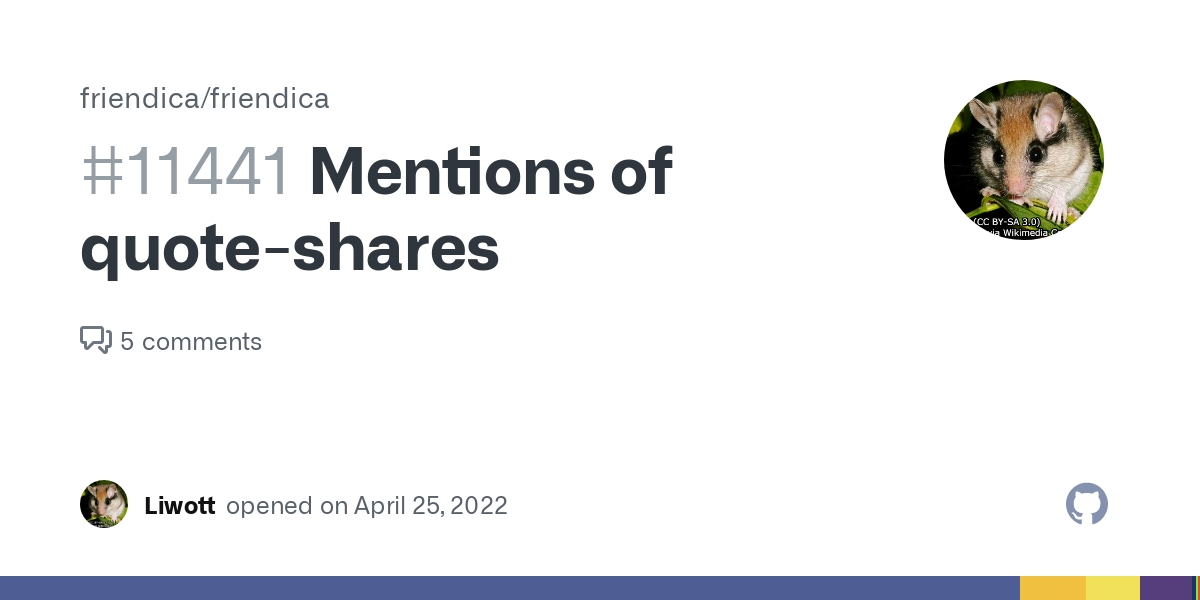I recently started thinking again about the Social knowledge fabrics discussion, and it seems to me that one of the biggest obstacles for fedi to become one is the following. The things we refer to as “threads” are actually “branches of a tree”. You have a trunk, basically the whole fedi, each post is a branch, each branch can itself ramify into branches, but all the branches stay independent.
It would be useful if a discussion branch was not only shaped like a thread, but also had the usefulness of one : sewing, or tying together different discussion topics. Sometimes I think again about an old discussion when participating in a new one, and so I cite it. But this message is still fundamentally part of the new discussion, while the newly established link should be of equal interest to participants of both threads.
What we miss is for that message to be part of both conversations, or a clear way to automatically signify to both threads that something new happens. Of course, this can be done by hand, writing a comment in each cited branch to point to the new one. But we won’t remeber to do that everytime, or we will not want to “necrobump”, or we just don’t want to make the extra effort. So it would be interesting if the relations were established automatically. For example the way I proposed for Friendica’s quote-shares in the linked URL, or the way GitHub handles issue that cite each other.
Maybe two old topics will come to know about each other that way, effectively being sewed by the new thread.



Note that on #Friendica we can quote-share, and we can also do it in comments. As I discovered recently by playing in the below post
♲ @Liwott@lemmy.ml:
these make it through to #Lemmy when we do it in a comment, but not in a top-level post (which is already a great start !). So, in Friendica, all that’s missing is the backlink !
This seems interesting, but I must say I don’t directly see an application of this in the context of microblogging/commenting. Maybe you can inspire us here? 😀
PS. I have since transferred the idea of Social Knowledge Fabrics to the Social Coding Movement co-shared community forum: Semmy: Social Knowledge Fabrics. I added a cross-reference to this topic. (Note that I intend to bring Fediverse Futures itself under the Social Coding umbrella)
I already gave some follow-up in this other comment. In general when brainstorming use cases it help to think what current Microblogging offers: basically an ordered timeline (stream) of sticky notes (
as:Note), and selecting a note renders a hierarchical discussion tree. What if there were more semantically meaningful objects in the stream, and non-hierarchical relationships (making it a true graph)?An example. Suppose a more academic setting for microblogging e.g. supported by scholar.social. I’d be making some claims in a toot and you respond with “References, please!”. I could respond with another sticky notes with some URL’s. But I might also respond by creating a
ac:Citationinstead, whose widget UI is decicated of making proper citations. Going further, instead of you sending me a “References, please!” sticky note, you might send me anInvite{ac:Citation}and my response mightUpdate{Note}my original toot and add citation cross-reference. Clients that don’t support the message exchange in the Academics domain might still see a fallback to regular sticky notes like before.Next to inviting citations, it would also be nice for everyone to be able to add citations. Make it more of a collaborative effort than someone’s time line.
Would it need a way to make clear we are really interested in the citation? I feel that most cases people ask for citations, they mean to say diplomatically that the claim is nonsense.
The problem is that if such tool comes to exisyence, the people who want to politely say bullshit will use that one out of politeness
Yes, you are right. My example served purely to present a use case where richer semantics might make sense in a microblogging context. In an actual app you’d model the domain first and drill down to concrete vocabulary formats from there.
Oh, like the “ref needed” box on Wikipedia? Academic citation was also the main example I had in mind when first asking about backlinks, but I didn’t see the need for an extra relation, thanks for that !
Quite similarly I think, there could be
Like{ac:citation}, that can be used in particular by the author of the cited medium to show whether or not they endorse the way their work is referred toYes, exactly. Though in those extensions there should be careful thought about the semantics that are used in the vocabulary definition. So
Likemay work, but you might consider havingac:Endorse{ac:Citation}instead. Especially if there’s a fallback to show this in regular microblogging timelines you’d have random fedizens liking, and accredited academics endorsing.Is there a semantic difference between liking and endorsing from the sender’s point of view? From your comment it seems to me that the only differences are in the nature of the sender, and how much they are trusted by the receiver. In this case, it may as well be the receiver’s job to filter likes according to who sends them and treat them accordingly.
But yeah I get your general point that vacabulary should not be chosen too fast
Note that I just came up with a rather random example. Though maybe inspired by @GrassrootsReview@lemmy.ml who is interested in evaluating the use of AP for similar use cases.
But yes, there could be such distinction that is relevant from sender’s perspective. Such as: “I
Likethis citation on first glance, and after reviewing I mayEndorseit.”